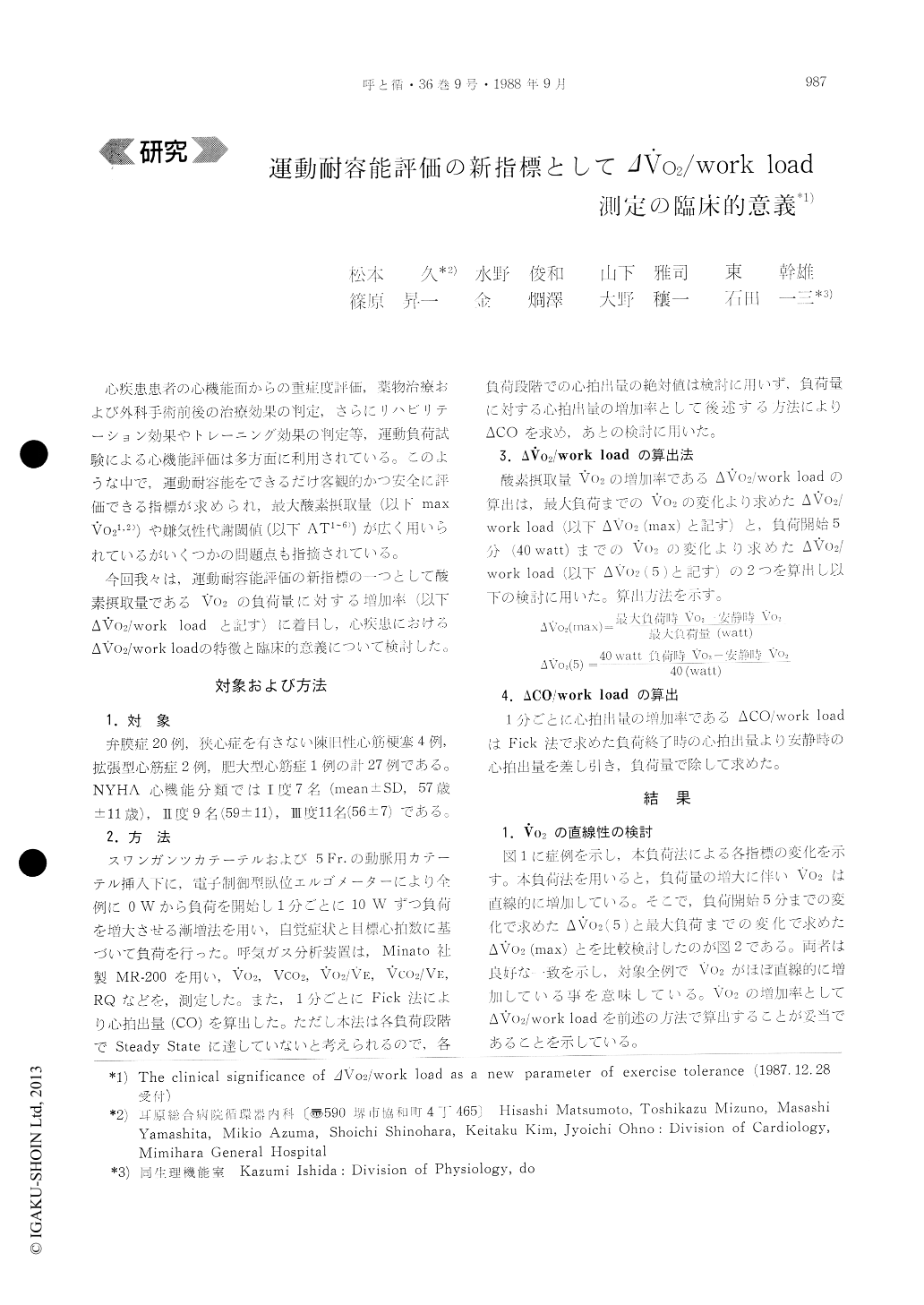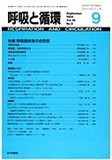Japanese
English
- 有料閲覧
- Abstract 文献概要
- 1ページ目 Look Inside
心疾患患者の心機能面からの重症度評価,薬物治療および外科手術前後の治療効果の判定,さらにリハビリテーション効果やトレーニング効果の判定等,運動負荷試験による心機能評価は多方面に利用されている。このような中で,運動耐容能をできるだけ客観的かつ安全に評価できる指標が求められ,最大酸素摂取量(以下maxVO21,2))や嫌気性代謝閾値(以下AT1〜6))が広く用いられているがいくつかの問題点も指摘されている。
今回我々は,運動耐容能評価の新指標の一つとして酸素摂取量であるVO2の負荷量に対する増加率(以下ΔVO2/work load と記す)に着目し,心疾患におけるΔVO2/work loadの特徴と臨床的意義について検討した。
Progressive bicycle exercise test was performed in 27 patients with chronic heart disease, and ΔVO2/ work load (ml/min/watt) was measured in order to evaluate exercise tolerance. ΔVO2/work load was calculated by the following two formulas, and each ΔVO2/work load was expressed as ΔVO2 (max) and VO2 ( 5 min) as shown under.
ΔVO2(max)=VO2 (max)-VO2 (rest)/work load at max.stage
ΔVO2(5 min)=VO2 (max)-VO2 (rest)/work load at 5 min
Simultaneously cardiac output (CO) was measured by Fick's principle and ACO/work load (ml/min/ watt) was calculated.
VO2 (max) correlated with VO2 (max) in 27 cardiac patients (r= 0.69, p<0.01). Respiratory compensatory threshold (RCT) was shown in eighteen patients, and in thisroup ΔVO2 (max) and AVO2( 5 min) correlated with VO2 (max) respectively (r= 0.80, p<0.01 ; r= 0. 68, p <0. 02).
ΔVO2( 5 min) decreased progressively as New York Heart Association functional classification advanced (Class I , 12. 1.± 1. 5 m//min/watt ; Class II , 11. 8 ± 1. 6 ; Class 711, 9. 5 1. 7 ; p<0. 05 between each group other than Class I and ClassII ). ΔVO2 ( 5 min) cor-related with ΔCO/work load (r= 0. 70, p 0. 01).
Thus VO2/work load is one of the important para-meters in order to evaluate exercise tolerance in patients with chronic heart disease.

Copyright © 1988, Igaku-Shoin Ltd. All rights reserved.


